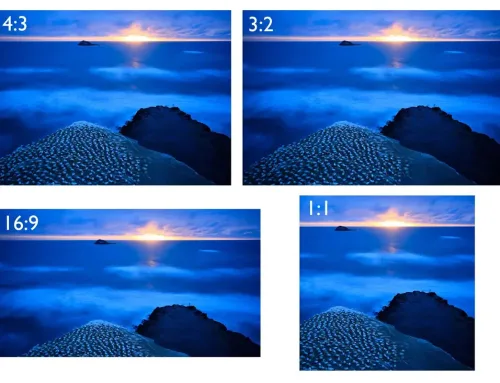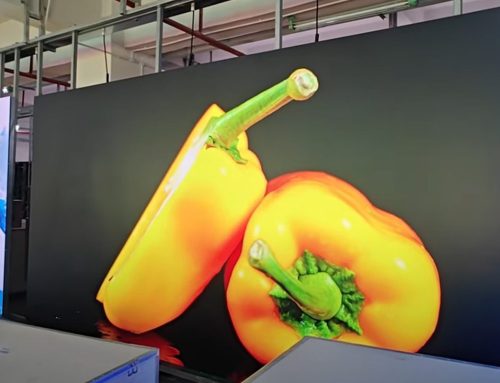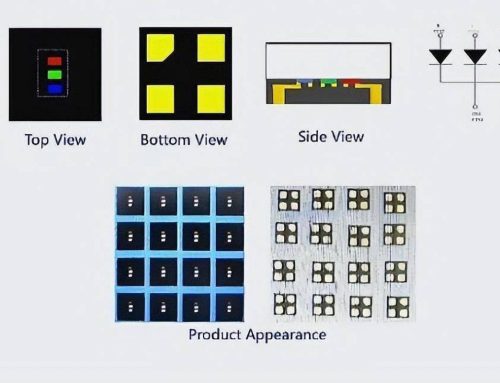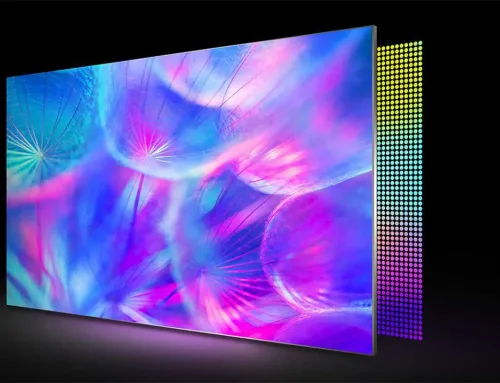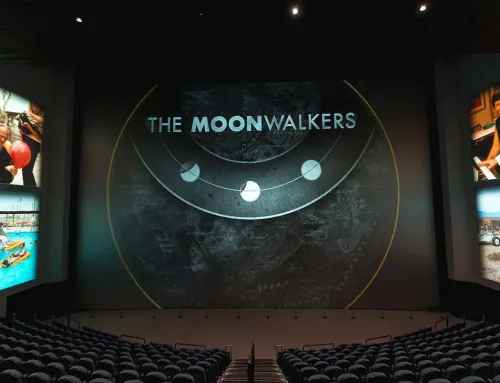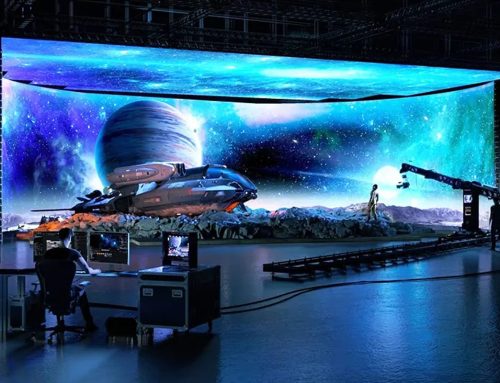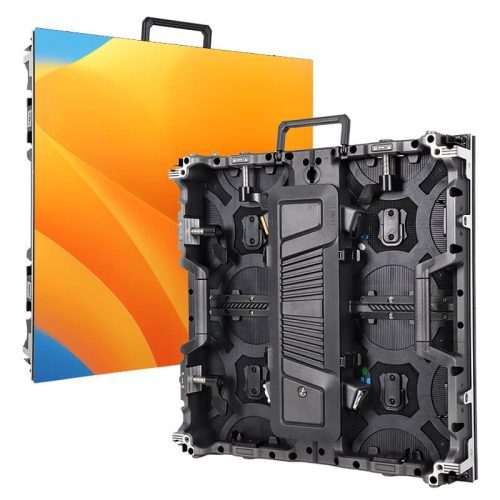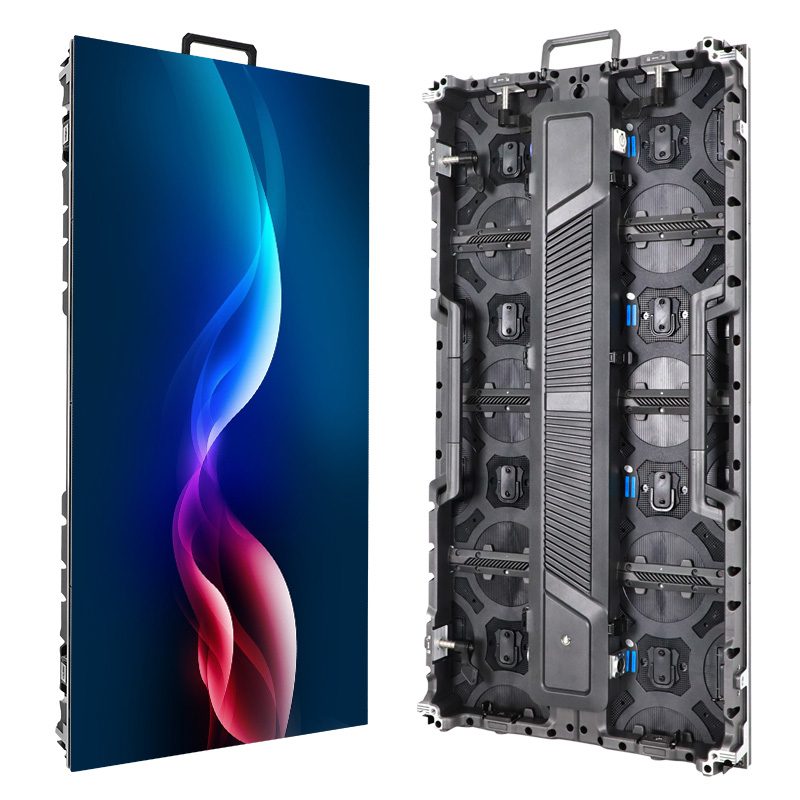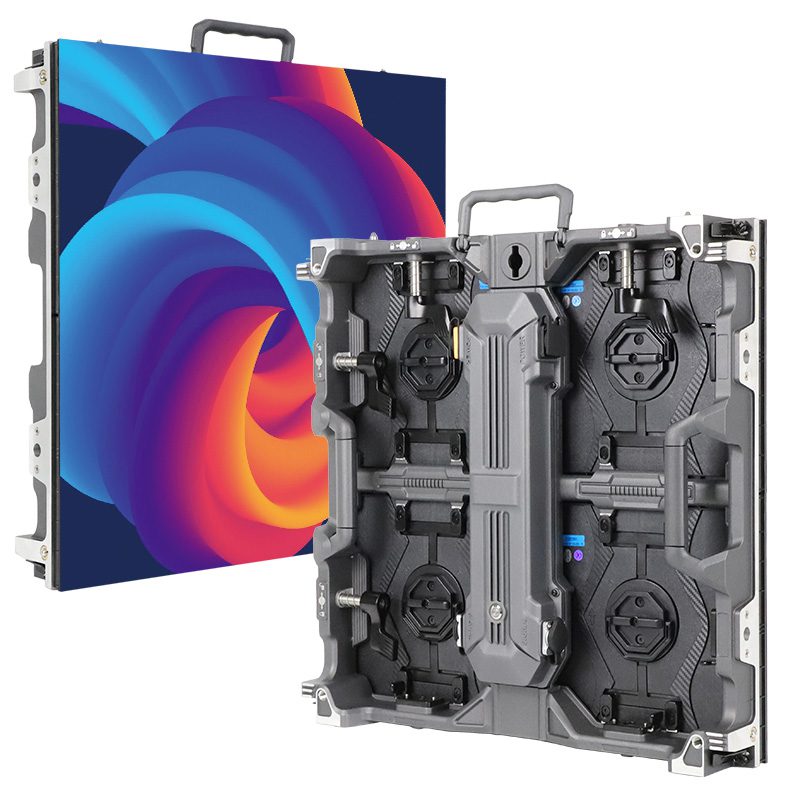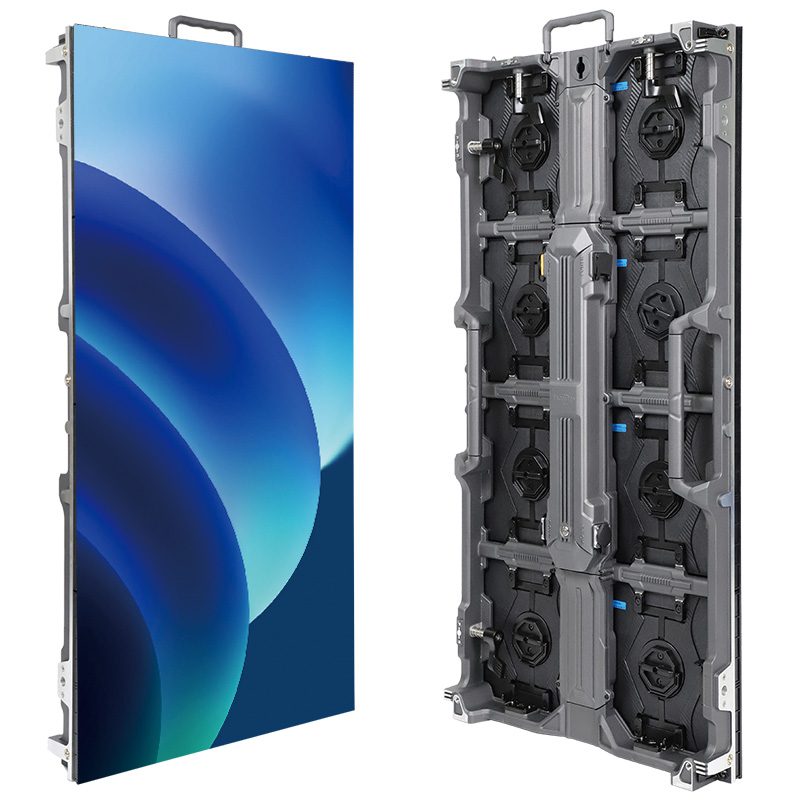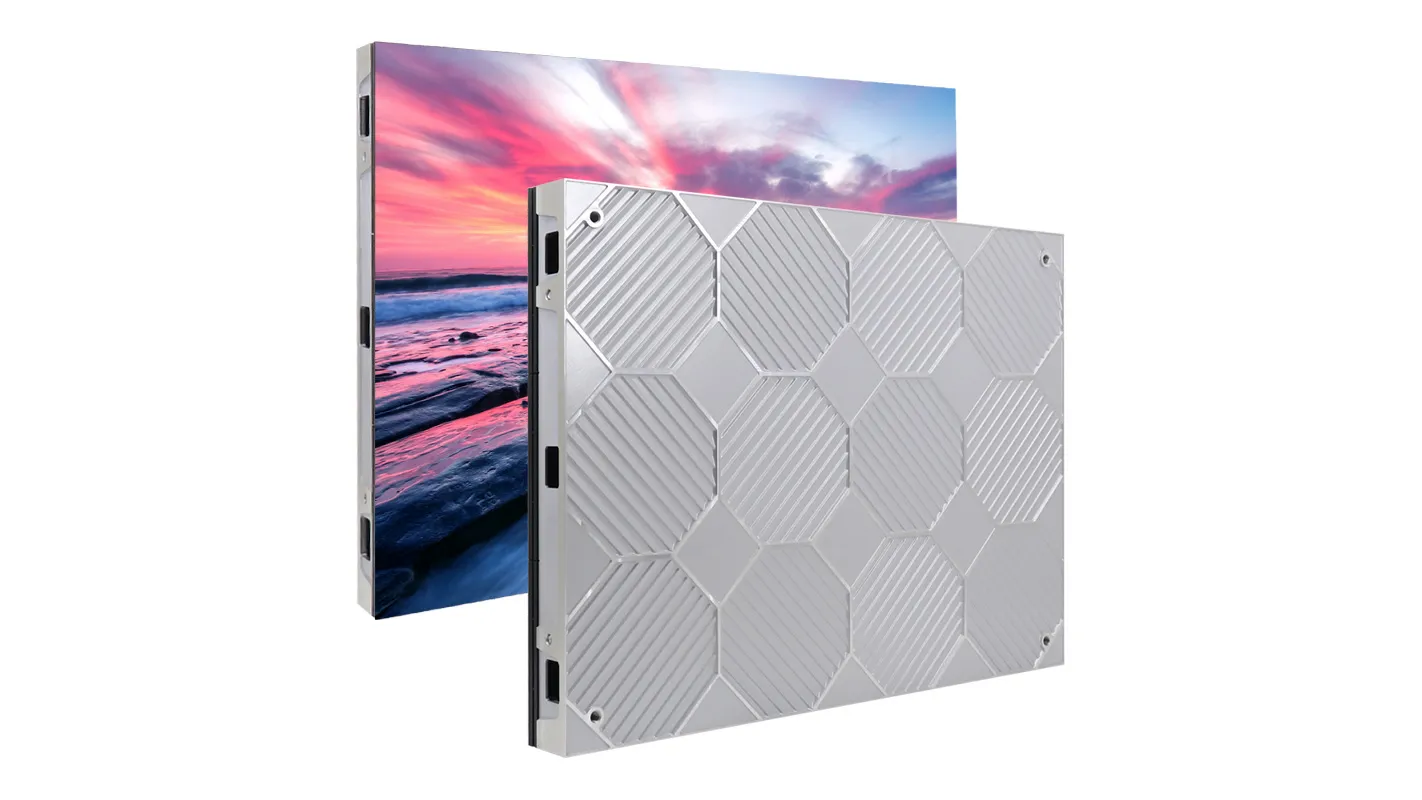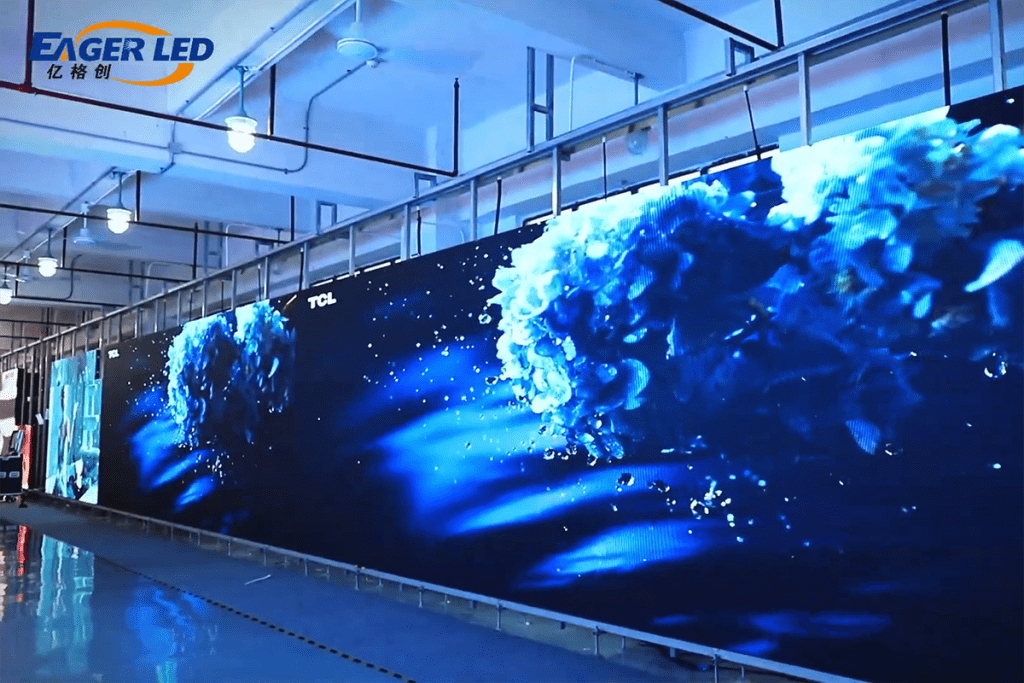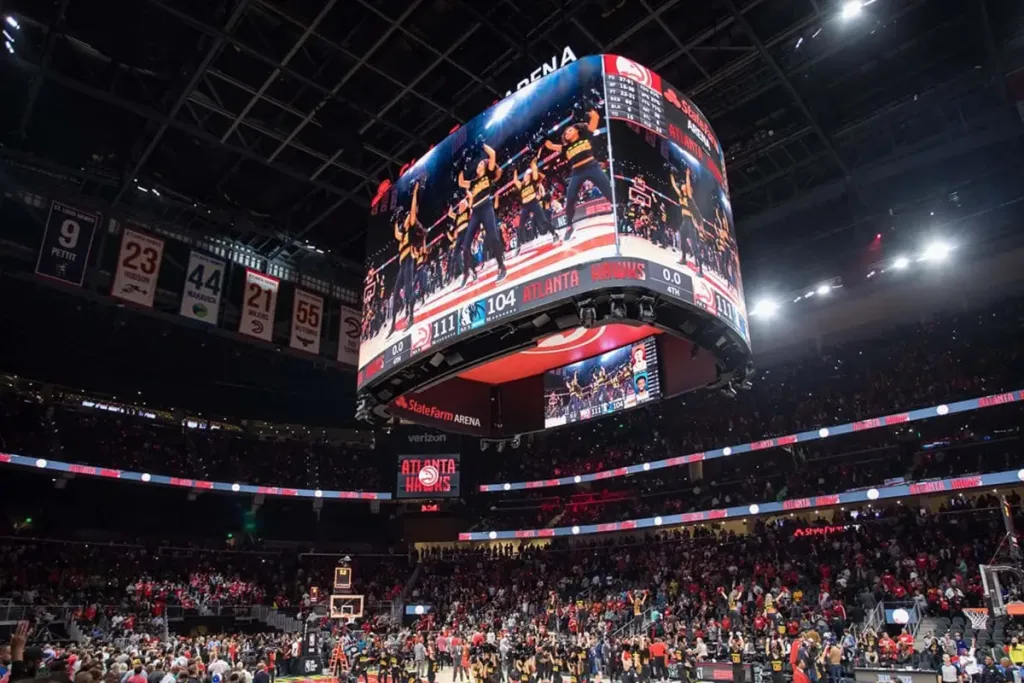When buying an LED display, you may often see a word mentioned in the product parameters – LED refresh rate. This parameter is directly related to whether the screen image is smooth, whether there is a sense of flickering, and other effects.
The refresh rates of LED screens on the market range from 1920Hz to 3840Hz. Is the higher the number, the better? Is the high refresh rate worth paying for? how to choose the right screen refresh rate? This guide will walk you through everything you need to know.
catalogue
- 1. Wat is LED-vernieuwingsfrequentie?
- 2. Wat is het verschil tussen vernieuwingsfrequentie en frame rate in LED?
- 3. Hoe kan ik de vernieuwingsfrequentie van het beeldscherm wijzigen?
- 4.1920Hz vs. 3840Hz: welke LED-vernieuwingsfrequentie is beter?
- 5. Hoe weet ik wat mijn LED-vernieuwingsfrequentie is?
- 6. Beste vernieuwingsfrequentie voor verschillende gebruikssituaties
- 7. Veelgestelde vragen over LED-vernieuwingsfrequentie
- 8. Conclusie
1.What Is LED Refresh Rate?
LED display refresh rate is an important parameter to measure the refresh speed of LED screen images, which determines whether the image is stable and whether it is easy to flicker.
1.1 The definition of LED refresh rate
LED refresh rate refers to the number of times the LED display refreshes the screen per second.You can think of it as “page turning speed”. If the screen is a flash book, the refresh rate is how many pages it turns per second.
For example, 1920Hz means that the screen “turns pages” 1920 times per second; and 3840Hz means 3840 times. The faster it turns, the more stable and flicker-free the visuals looks.
These “page turns” are not to change the image, but to repeatedly “redraw” the current image.
Why is this so? Because the LED screen is displayed by lighting up the light. If it is not refreshed repeatedly, the light will go out and the image will flicker.
So the essence of the refresh rate is to keep the image on, without shaking or flickering.
If the refresh rate is too low, such as 960Hz or lower, you may feel the visuals shaking with your naked eyes. If you use a mobile phone to shoot, you will also see horizontal lines and ripples. But if it is a high refresh rate, such as 3840Hz, you will not only feel comfortable to watch, but also the pictures taken with your mobile phone will be clean and without interference lines.
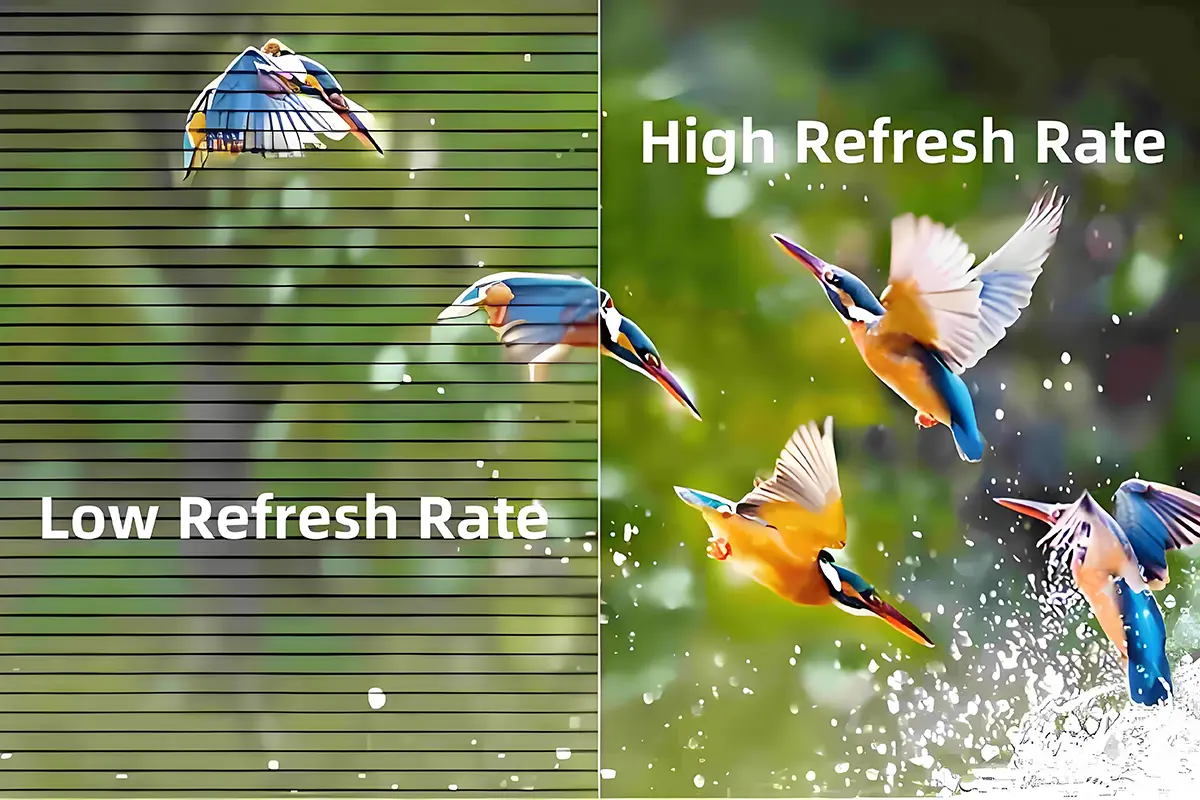
1.2 How refresh rate affects LED screen performance
LED refresh rate directly affects how steady and clear your screen looks — and that makes a big difference in viewing comfort and filming quality.
The most obvious difference? Whether the screen flickers or stays stable.
If the refresh rate of LED screen is too low, such as only a few hundred hertz, the visuals may jump slightly, especially when playing videos or moving visuals, which can easily make people tired of the eyes.
But if the refresh rate is high, such as 1920Hz or 3840Hz, this problem will be greatly reduced, and the visuals will look smoother and more stable.
Another scene that you must care about is whether there are horizontal stripes or ripples when taking photos or videos.
If you often shoot LED screens for publicity, live broadcasts or performances, then the low refresh rate is almost a “disaster”. When you shoot with your mobile phone, the screen is full of stripes;
The high refresh rate screen produces a cleaner effect, without flickering, and will not affect the visuals quality.
Finally, the refresh rate also affects the smoothness of playing video content, such as commercials, animations, and scrolling subtitles. High refresh can prevent animations from skipping frames or smearing, and the overall look is more professional.
1.3 What does Low or high refresh rate relate to?
You may think that the refresh rate of LED is set by the manufacturer, but it is not.
How high the refresh rate of the screen can run depends on several key factors:
Driver IC: This is the “heart” that controls the on and off of each lamp bead. Cheap IC can only support low refresh rate, such as 960Hz. If you want to reach 3840Hz, you have to use high-performance chips.
Control system: There are also differences in control system, such as NovaStar, Colorlight, Linsn and other systems. Different models support different refresh limits.
Module design and wiring: Insufficient power supply or unreasonable wiring will also reduce the actual effect.
2.what is the difference refresh rate and frame rate in LED?
Refresh rate is often confused with frame rate and scan rate. These are three important factors that affect screen playback quality from different angles.
2.1 What are Frame Rate and Scan Rate?
Frame rate refers to how many frames of video or animation are shown per second, measured in fps (frames per second). For example, when you watch a movie, the frame rate might be 30fps or 60fps, meaning 30 or 60 continuous pictures are played every second. Higher frame rates make the motion look smoother and more natural.
Scan rate describes how fast the LED screen’s circuitry lights up its LEDs in groups, row by row. You may not realize that the LED lights don’t all turn on at once — instead, they are divided into many groups that light up quickly in sequence. This speed is called the scan rate. If it’s too slow, the image may look dim or flicker; if it’s fast, brightness is higher and the image looks more stable.
In simple terms: frame rate is the “speed” of the content you watch, refresh rate is the screen’s “frequency” of refreshing, and scan rate is how efficiently the screen “lights up” its LEDs. All three affect the final image quality, but focus on different aspects.
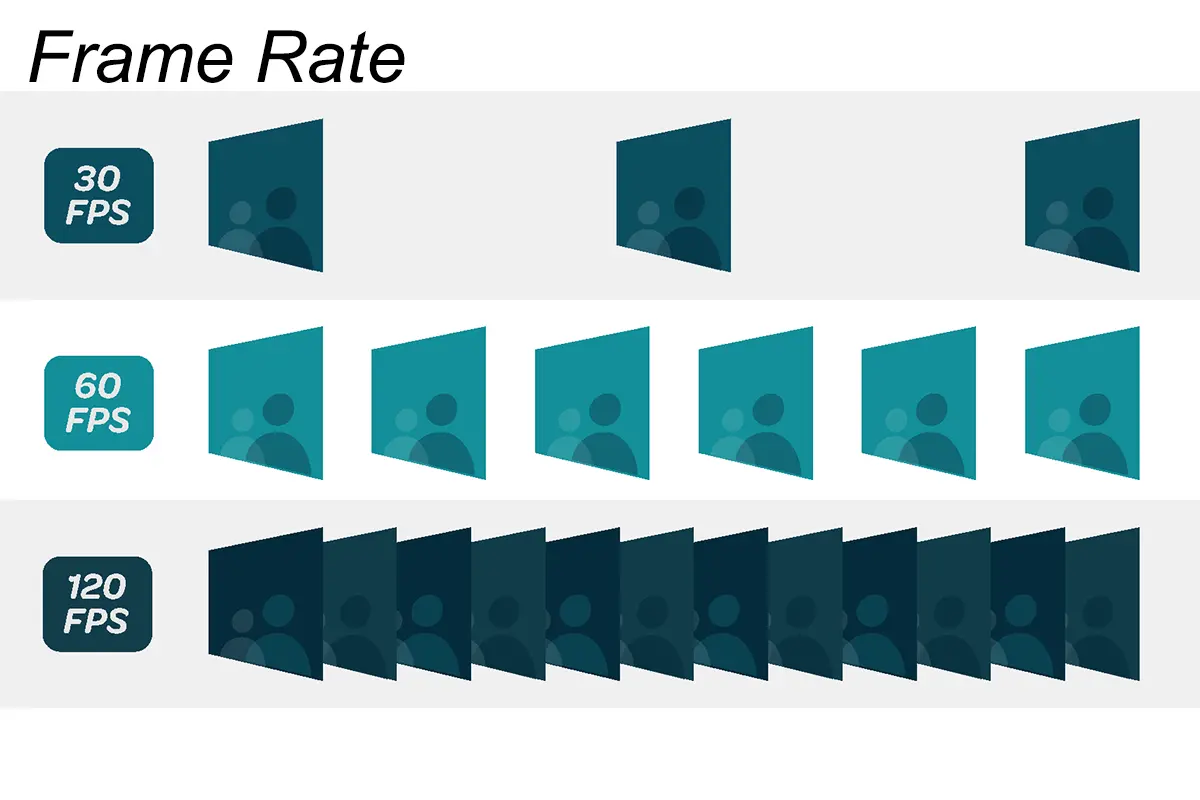
2.2 which of these three parameters matters most?
The refresh rates is the most important parameter to consider when buying an LED display.
Why? The LED refresh rate is what determines if the image will be stable and flicker free. A low refresh rate screen can cause flickering or interference lines to appear, especially if you are watching the screen for an extended period of time, or using your mobile phone to record video.
Frame rates are largely determined by the content. You only need to ensure that the refresh rate of the screen matches the frame rate in your content when choosing a display. IIf your video plays at 60fps, the screen refresh rate needs to be at least 60Hz.
Scan rates have less of an impact on daily use. It is usually configured by the manufacturer based on design. You don’t have to worry about it.
Summary: The key factor in choosing an LED screen is its refresh rate. Higher refresh rates provide a stable image, better recording quality and a professional screen.
3.How to change display refresh rate?
Many people think that the refresh rate of LED display is a fixed parameter when it is bought, but it is not entirely true.
The refresh rate of some LED displays can be adjusted through software or hardware configuration. But some screens are “locked” at a low refresh rate and cannot be adjusted no matter how.
3.1 Situations where the LED refresh rate can be adjusted
Use supported software systems: Many LED control systems (such as NovaStar, Colorlight, Linsn) have the function of adjusting the refresh rate. As long as your screen supports it, you can set it in the control software, such as switching to 1920Hz or 3840Hz.
Control cards and receiving cards support high refresh rates: The control system is divided into sending cards and receiving cards. Some old models of receiving cards do not support high refresh. To increase the refresh rate, your receiving card must support high refresh configuration.
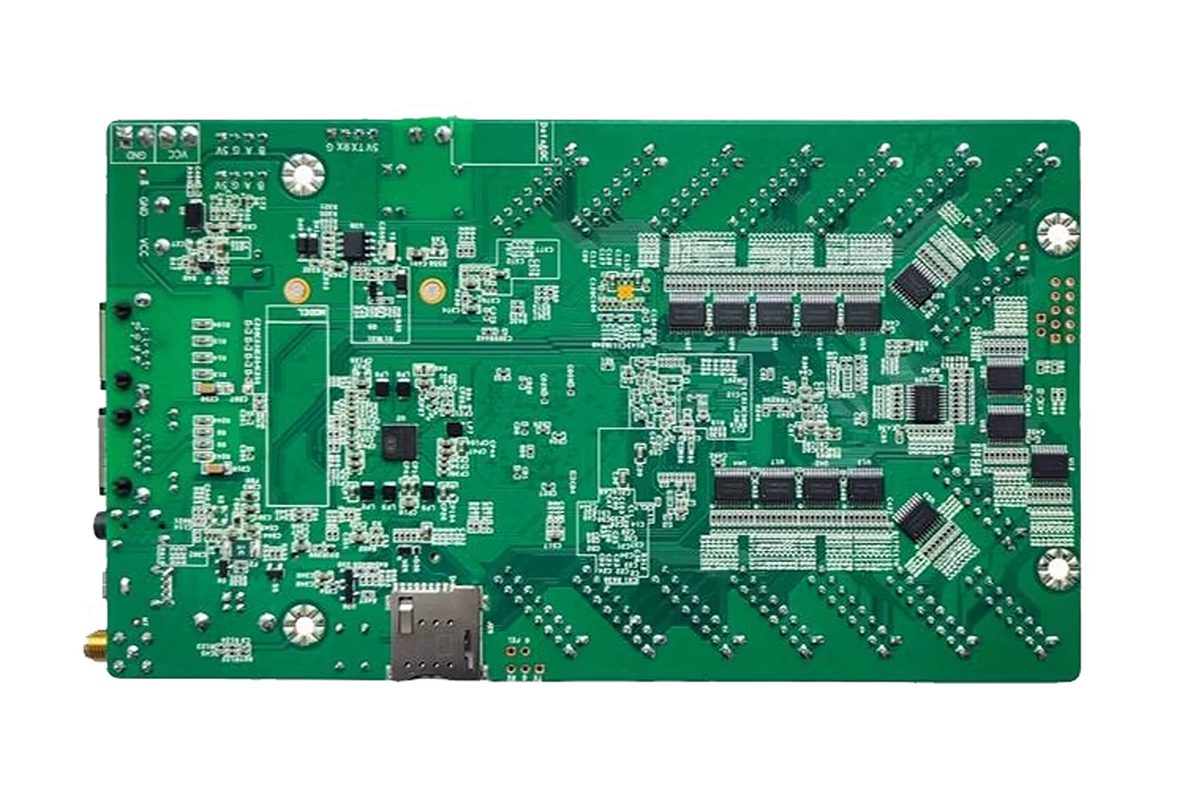
Novastar LED Display Control Card
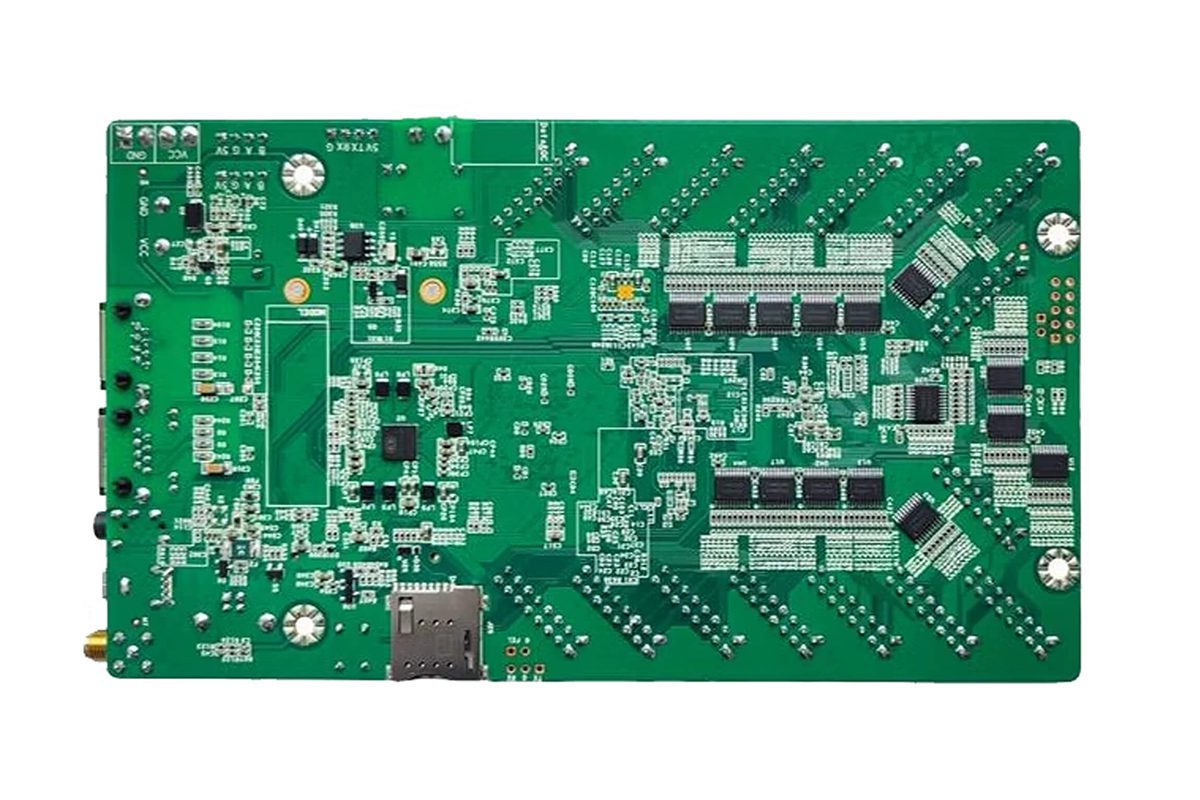
Linsn Mini913D LED Display Screen Receiving Card
Driver IC support: The driver IC is the “nervous system” of the screen, controlling the speed at which each row of lamp beads turns on and off. If your screen uses a high-performance IC (such as MBI5252, ICN2053, ICN2153, etc.), it can generally be adjusted to 3840Hz.
3.2 Situations where the LED refresh rate cannot be adjusted
Hardware limitations: Some entry-level LED screens were not designed with high refresh requirements in mind, and the cables, power supplies, and circuit boards do not meet the high refresh standards. Even if the software can adjust it, the actual effect cannot be achieved.
The refresh rate is hard-coded in the configuration file: Some manufacturers will directly lock the configuration file when it leaves the factory, such as 960Hz when it leaves the factory. Then you can seem to be able to choose a higher refresh in the software, but it actually does not take effect in the background. This situation is difficult to solve with software.
LED modules are low-end driver chips: If you buy a very cheap module, it is likely to use a low-refresh driver IC (such as MBI5124, ICN2027, etc.). This chip can only run at around 960Hz, and the hardware performance is at its limit.
Comparison table of common LED driver ICs and refresh rate support
| Driver IC Model | Whether to support high refresh rate (≥1920Hz) | Maximum supported refresh rate | Typical application scenarios |
|---|---|---|---|
| MBI5124NO | NO | ≤960Hz | Basic information screen, low-end advertising screen |
| ICN2027 | NO | ≤960Hz | Classrooms, small meeting rooms |
| MBI5153 | YES | 1920Hz–3840Hz | Stage, advertising vehicle, live screen |
| ICN2053 | YES | 3840Hz | High-definition small-pitch screen |
| ICN2153 | YES | 3840Hz+ | High-end performances, virtual shooting scenes |
| MBI5252 | YES | 3840Hz+ | Outdoor advertising screen, high-end customized screen |
4.1920Hz vs 3840Hz: Which LED Refresh Rate Is Better?
This higher refresh rate (3840Hz) will reduce the likelihood of experiencing flickering on your screen and water ripples while taking pictures and recording videos. Overall, the experience is more comfortable and suitable for events with high demands for image quality.
4.1 What is the real-world advantage of 3840Hz compared to 1920Hz?
The visuals is almost flicker free and smoother with the 3840Hz LED refresh rate.
When playing fast-moving video or scrolling subtitling, the 1920Hz display may show slight flickering or smearing. This is especially true in low lighting or when using a camera. These problems are much more apparent. This screen reduces these problems, making it look more natural.
When using a smartphone or professional camera, you may see ripples or stripes on the LED screen due to the 1920HzLED’s refresh rate. This will impact the shooting results. The 3840Hz screen is faster, and the image is clearer, no interference lines.
Naturally, 1920Hz is already able to meet the majority of daily usage scenarios such as information releases and conference room presentations. 1920Hz will be more cost-effective if you don’t care about the best image or shooting effects. For the best image quality and filming results, 3840Hz is your best option.
4.2 Is there an LED Refresh Rate lower than 1920Hz or higher than 3840Hz?
Right now, most LED screens use two main refresh rates: 1920Hz and 3840Hz.
Lower rates (like 960Hz or below) cost less but make the screen flicker and look shaky. Because of this, they’re being used less often, especially when people need high-quality visuals or filming.
3840Hz is now popular in high-end LED screens. It makes images steadier and sharper, so it’s great for live streams, stage shows, and pro ads where top visuals matter.
Some high-end screens now go above 3840Hz, like 5000Hz or more. These are mostly for special uses—movie-making, VR, and medical screens—where they cut flicker even more and make motion smoother.
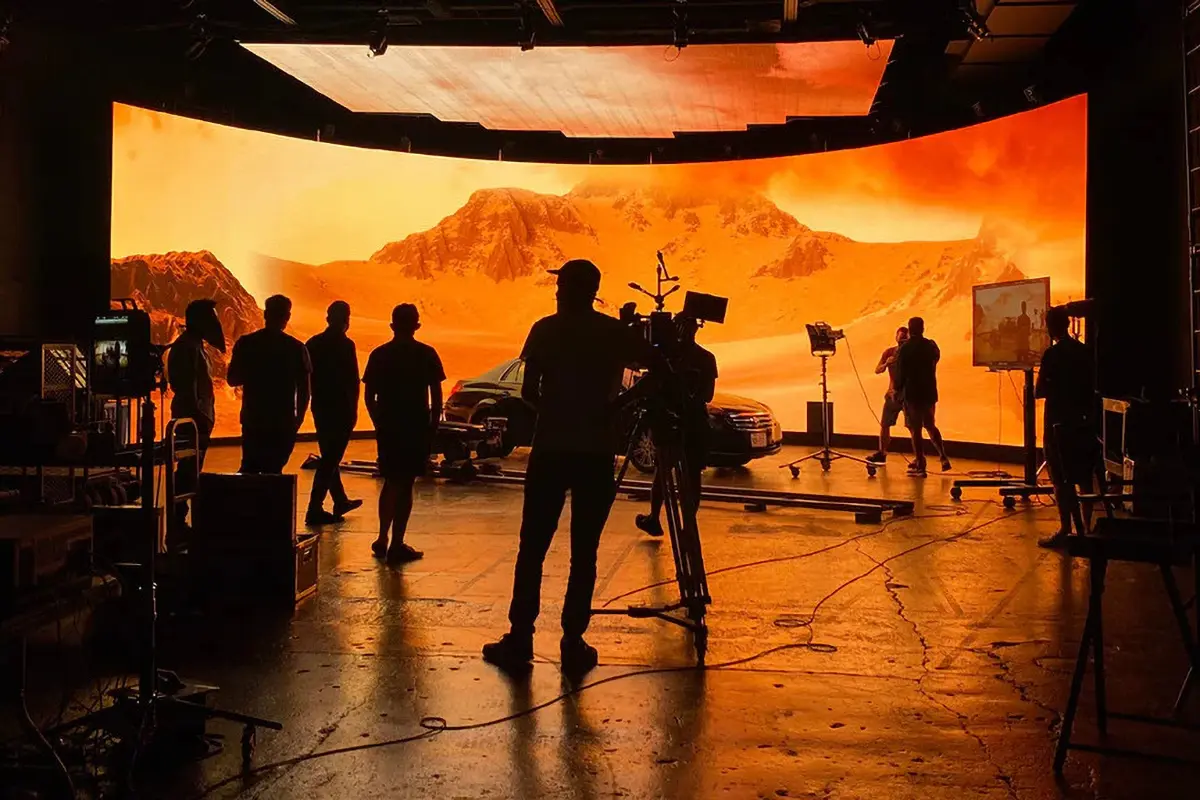
5. How do I know my LED refresh rate?
When buying an LED screen, most sellers will list the refresh rate LED—like 1920Hz or 3840Hz. But have you ever wondered: is that number always real?
Some cheaper or off-brand screens may say they have a high refresh rate, but the real performance isn’t that great.
How can you test refresh rate on your own? Is there a way to check if your screen really has a high refresh rate?
Yes, and you don’t need any special tools.You can try a quick test by yourself.
5.1 Simple ways to test refresh rate by yourself
The easiest way to test refresh rate is with your phone.
Method 1: Take a photo or record a short video.
Use your phone camera to capture a photo or record a short video of the LED screen.
do you see lines, flickers, or waves on the screen in the photo or video?
If the image looks clean and smooth, your screen likely has a high refresh rate like 1920Hz or 3840Hz.If you see strong lines or flickering, it’s probably a low refresh rate, like 960Hz or less.
This test isn’t 100% accurate, but it’s a very useful way to check the screen quality in daily use.
Method 2: Check it with your eyes.
Watch the screen when it plays moving content, like scrolling text or animation. If it looks shaky, flickers, or makes your eyes tired after a while, the refresh rate may be low.
This isn’t a technical test, but it helps you feel whether the screen is smooth or not.
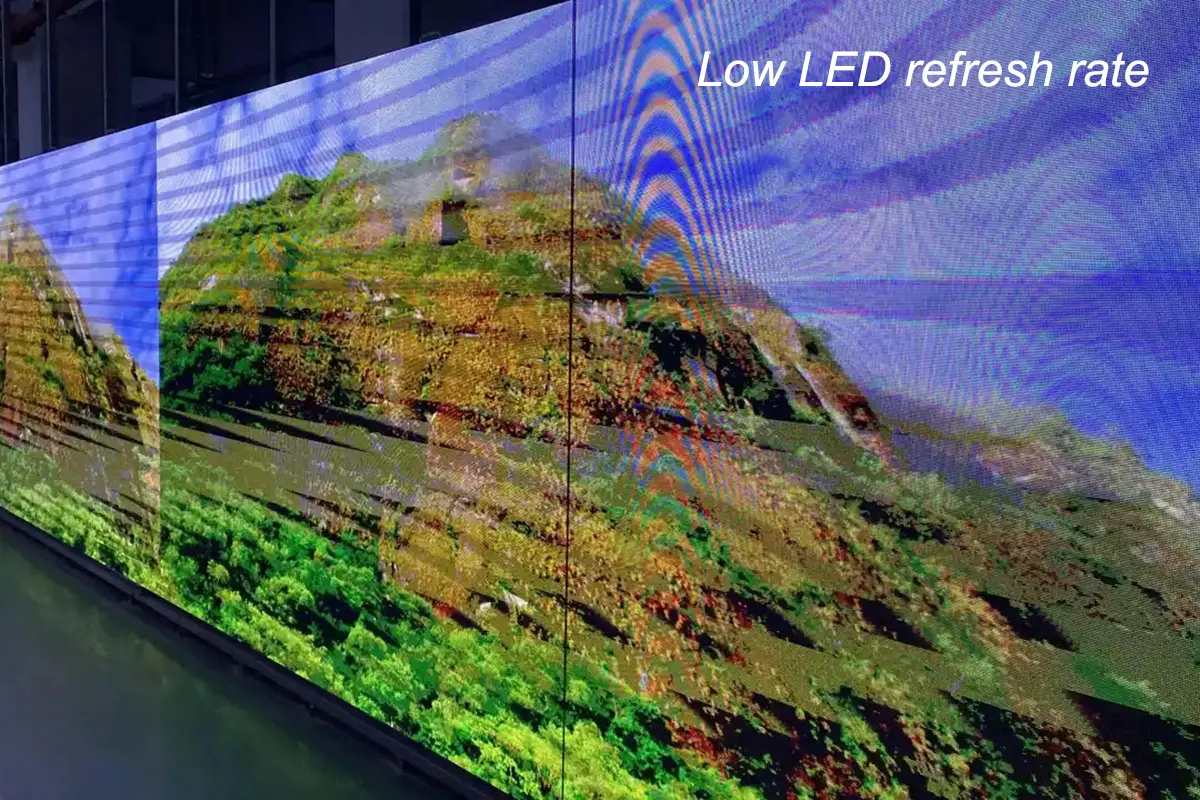
5.2 Use tools or software to check the actual refresh rate
If you want to test refresh rate more accurately, you can use LED control software or some extra tools.
Check with control system software:
Most LED screens use control systems like NovaStar, Colorlight, or Linsn. You can open the software—such as NovaLCT—and look at the receiver card settings. The refresh rate is usually shown clearly, like “Refresh Rate: 1920Hz” or “3840Hz”.
Use testing tools:
Some engineers use devices like oscilloscopes to check the PWM signal. This gives a very accurate way to test refresh rate, but it’s a bit technical and mainly for professionals.
Check if you can adjust the refresh rate:
If you’ve built your LED screen yourself, some control systems let you switch refresh rate modes in the software. But whether it actually works depends on your driver IC and LED modules—some hardware doesn’t support high refresh rates even if the software allows it.
6. Best Refresh Rate for Different Use Cases
You’ll often see LED screens with refresh rates like 960Hz, 1920Hz, 3840Hz, or even higher. But what’s the best refresh rate?
6.1 What’s the best refresh rate for different scenarios?
There’s no one-size-fits-all answer. The best refresh rate depends on how and where you use the screen—what content you’re showing, how your audience is viewing it, and how demanding the environment is.
Here are some typical use cases and suggested refresh rates.
Meeting rooms, classrooms, and information displays:
These screens mostly show static images or simple animations. A refresh rate of 1920Hz is usually enough—no flicker, comfortable to view for long periods, and cost-effective.
Shopping malls, hotels, and retail advertising screens:
A LED refresh rate between 1920Hz and 3840Hz is recommended. If your content is video-heavy or you’re going for a premium look, 3840Hz is the best refresh rate.
Outdoor advertising screens or mobile LED displays:
These often get recorded or photographed, and they’re used in moving or changing environments. A 3840Hz high refresh rate is a safer choice to avoid visible scan lines during filming.
Stage performances, live event backdrops, and film production LED screens:
These scenes demand top image quality, especially during filming. A high refresh rate is a must—3840Hz at the very least, and sometimes even higher, to avoid flicker or lag on camera.
EagerLED offer a wide range of high refresh rate LED screens (from 3840Hz up to 7680Hz) for all kinds of professional needs.
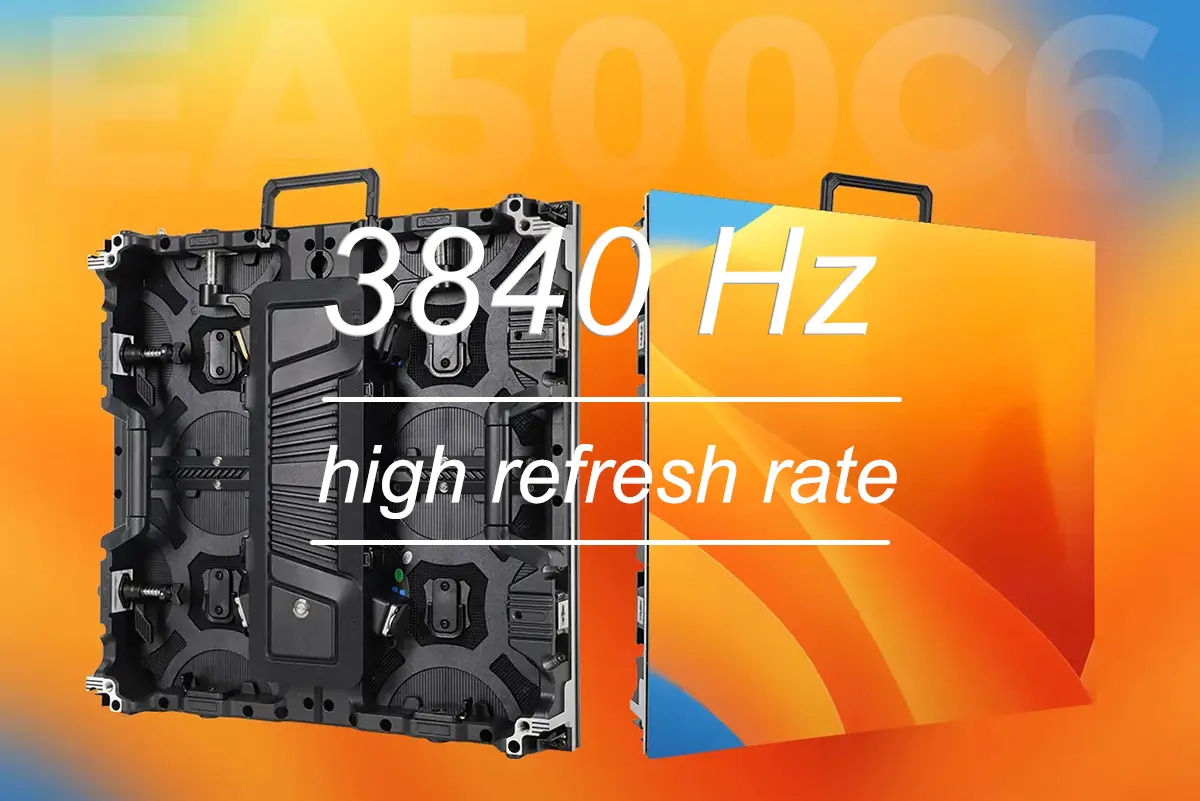
Our French customers use the 3840Hz high refresh rate EA500C6 Rental LED Video Wall for advertising and brand display, playing high frame rate videos and real-time shooting images.
The customer feedback is very good: the live picture is very stable, without any flicker, and the photos and live broadcasts are very clear. It is really worth the money.
6.2 Is a High Refresh Rate Always Better?
Many people see numbers like “3840Hz” or “7680Hz” and assume that the higher the refresh rate, the better. But that’s not always true.
A high refresh rate does offer a more stable image and better results when filming—but not every use case needs it.
If you’re only displaying text, simple graphics, or using the screen for meetings, a 1920Hz LED refresh rate is already very stable and more than enough.
On the other hand, paying for an ultra high refresh rate screen in a low-demand setting might be a waste—your viewers probably won’t notice the difference.
So when is a high refresh rate really necessary?
- When you’re filming the screen a lot—like for live shows, performances, or video ads.
- When the screen is used in bright environments and needs to avoid flickering.
- When it’s for premium branding or display and every detail counts.
7. FAQ About LED Refresh Rate
8. Conclusion
LED refresh rate directly affects how stable, clear, and smooth your screen looks—especially when being filmed or used in fast-paced environments.For meetings and basic displays, 1920Hz is usually enough. But for live streaming, filming, or high-end advertising, going with 3840Hz or a high refresh rate screen is a smarter choice.
Still unsure which LED refresh rate suits your needs best? Feel free to contact us—we’ll help you find the right screen for your specific application.


